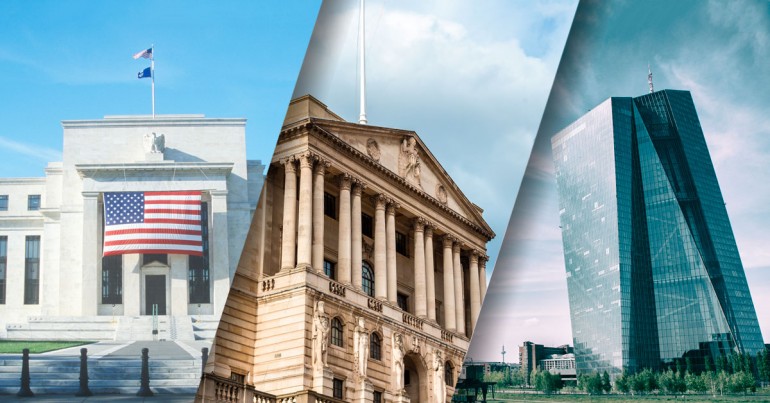
Dovish Fed drives the dollar lower
Morning mid-market rates – The majors
January 31st: Highlights
- 2019 rate hike chance rated at 25%
- Sterling rallies despite a resounding NO from Brussels
- Eurozone data shows falling business confidence
Powell comments even more cautious than market expectations
The statement from Chairman, Jerome Powell, which followed the announcement, not only confirmed that the Fed would pause its recent programme of rate hikes but Powell was more cautious than had been expected about the prospects for the U.S. Economy.
The most significant part of the statement was that the FOMC is prepared to shift the size and makeup of its balance sheet if it was felt that the economy needed more accommodation.
In his speech, Powell said that the committee had not reacted to political considerations when making its decision, commenting that all they cared about was “doing our job for the American people and using the tools at our disposal”.
The reaction of the dollar index, falling to a low of 95.21 in the wake of the decision, was based upon a knee-jerk rather than any further consequence of the Fed’s decision. Most market analysts saw the comments as being guidance that the Fed pausing in its hiking cycle rather than a confirmation that rates had reached their ”neutral point”. The interest rate futures market is pricing in a one in four chance of another hike this year but there is a long way to go before that prediction becomes reality either way.
The private sector jobs report which was released yesterday. This is a precursor of the NFP data, which will be released tomorrow. It was stronger than expected but below the December figure. That coincides with market expectations for tomorrow’s NFP.
Considering your next transfer? Log in to compare live quotes today.
Sterling higher in reaction to dollar fall
As had been widely expected following the slew of votes in the House of Commons on Tuesday evening, the EU remains forthright that the deal on offer is the best and the only one available.
Theresa May, the UK Prime Minister, has been emboldened by the backing she received from her MPs on Tuesday. She remains convinced that she can persuade Brussels that reopening the discussion to create a new form of words around the backstop agreement is the only way to avoid the UK crashing out of the EU in less than two months with no decision on the Withdrawal Agreement.
In a speech to the European Parliament, Jean-Claude Juncker, the EU Commission President, inferred that he believed it unfair of the UK to conclude that the deal was somehow being forced upon the UK when it had been negotiated and signed off by both parties. He said that the EU had refused to reopen negotiations in November, again in December and there was no reason to change their minds now.
Mrs. May is due to return to Parliament around the 13th of February to report on progress. It would be a supreme optimist who would predict anything but failure for this mission. That will leave a delay to the March 29 deadline as the only option available to avoid a hard Brexit. A second referendum has been ruled out by the Government and isn’t (officially) supported by the Opposition.
Any delay would have to be for less than three months to avoid a clash with the European elections but in truth, there is very little such a delay could achieve given Brussels entrenched position.
The pound rallied to a high of 1.3146 versus a weaker dollar but fell to a low of 1.1410 versus the euro which gave a more genuine guide to the concerns of the market.
Eurozone business confidence continues to fall
Data released yesterday for pan-Eurozone business and industry confidence fell although consumer confidence was a little higher than in December despite December’s data being revised lower. Consumer confidence tends to lag the confidence, or otherwise, being shown by business since they react to different drivers.
Since the ECB met a week ago and confirmed that there was very little it could do other than“ride-out” the economic slowdown, the data released by the region and its individual members have been uniformly weak.
This is far from the ideal backdrop for the EU elections campaigns which are beginning across the region with concerns growing of a political backlash against the euro manifesting itself in an upsurge in the performance of nationalist leaning candidates. It seems incongruous that candidates dedicated to the lessening of the power of Strasbourg and Brussels should wish to be elected but it seems that the best way to slow the march towards Federalization is from within.
The single currency also rallied versus a weaker dollar yesterday, reaching a high of 1.1502 and it has continued on the front foot overnight as the Asian market has reacted positively to the Fed’s comments.
Pan-Eurozone GDP data for Q4 will be released later this morning and despite several individual nations falling towards recession, it is expected that the region will have grown at 0.2% which is the same as Q3, contributing to an annual figure of 1.2%.
The market’s focus will then shift to the U.S. employment report and the euro will remain reactive to the dollar for the rest of the week.
Have a great day!

About Alan Hill
Alan has been involved in the FX market for more than 25 years and brings a wealth of experience to his content. His knowledge has been gained while trading through some of the most volatile periods of recent history. His commentary relies on an understanding of past events and how they will affect future market performance.”



